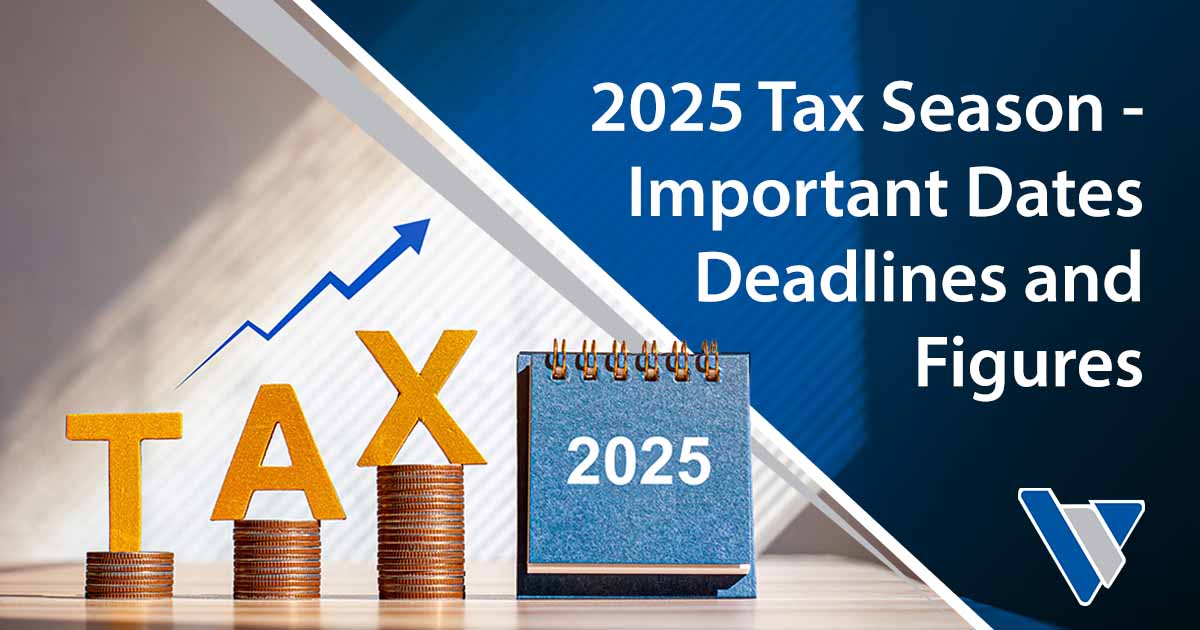It’s hard to believe that tax season is here already. In an effort to help our clients be...


It’s hard to believe that tax season is here already. In an effort to help our clients be prepared, we wanted to make sure you are informed of important dates and items to consider when preparing to file your taxes.
Important Dates
The LPL mailing schedule for your tax statements is listed below. In order to meet all IRS deadlines, reduce errors, and reduce the need to mail corrected versions, 1099 Consolidated statements will be mailed in four phases.
| Phase & 2020 MAILING DATE | DESCRIPTION |
| 1 – January 31 Release | 1099-R Form Mailing First wave of 1099 Consolidated Forms Mailing Includes accounts with the simplest tax information and not subject to income reclassification |
| 2 – February 18 Release
February 20 Release |
Second wave of 1099 Consolidate Forms Mailing Includes accounts holding securities that may be subject to income reclassificationPreliminary 1099 Consolidated Tax Statement DRAFT COPY Includes accounts that will not receive a final 1099 Consolidated Tax Statement until March 2 or March 16 |
| 3 – March 2 Release | Third wave of 1099 Consolidated Forms Mailing In the event investment companies do not furnish tax information to LPL in time for the February 15 mailing deadline |
| 4 – March 16 Release | Fourth wave of 1099 Consolidated Forms Mailing In the event investment companies do not furnish tax information to LPL in time for the February 18 or March 2 mailing deadlines and any accounts that hold securities that provide mortgage-backed income reporting information |
Important Deadlines in Calendar Year 2020
The following deadlines are for calendar year filers. The deadlines for partnerships and corporations that follow a fiscal year calendar vary, consult your tax professional for more information.
| Partnerships | March 16th
September 15th |
Deadline to file your return (IRS Form 1065) or file for an extension (IRS Form 7004)
Deadline to file your return if an extension was requested |
| S corporations | March 16th
September 15th |
Deadline to file your return (IRS Form 1120-S) or file for an extension (IRS Form 7004)
Deadline to file your return if an extension was requested |
| Trusts and Estates | April 15th
September 30th |
Deadline to file your return (IRS Form 1041) or file for an extension (IRS Form 7004)
Deadline to file your return if an extension was requested |
| Individuals | April 15th
October 15th |
Deadline to file your return (IRS Form 1040) or file for an extension (IRS Form 4868) Deadline to file your return if an extension was requested |
| C corporations | April 15th
October 15th |
Deadline to file your return (IRS Form 1120) or file for an extension (IRS Form 7004)
Deadline to file your return if an extension was requested |
Important Figures
The standard deductions for 2019 federal taxes filed in 2020 are reflected in the chart below. Note the additional standard deduction applies to each spouse, so if both spouses are over the age of 65 (and not legally blind) their additional standard deduction is $2,600.
|
Standard Deductions |
||
| Filing Status | 2019 | 2018 |
| Married Filing Jointly | $24,400 | $24,000 |
| Head of Household | $18,350 | $18,000 |
| Single | $12,200 | $12,000 |
| Married Filing Separately | $12,200 | $12,000 |
| Dependent | Greater of $1,100 or $350 + earned income |
Greater of $1,050 or $350 + earned income |
| Additional standard deduction for the blind and filers over the age of 65 | ||
| Single & Head of Household | $1,650 | $1,600 |
| All others | $1,300 | $1,300 |
The chart below reflects the 2019 federal income tax brackets for taxes due in 2020.
| Tax Brackets | ||||
| Tax Rate | Single | Married Filing Jointly | Married Filing Separate | Head of Household |
| 10% | $0-$9,700 | $0-$19,400 | $0-$9,700 | $0-$13,850 |
| 12% | $9,701-$39,475 | $19,401-$78,950 | $9,701-$39,475 | $13,851-$52,850 |
| 22% | $39,476-$84,200 | $78,951-$168,400 | $39,456-$84,200 | $52,851-$84,200 |
| 24% | $84,201-$160,725 | $168,401-$321,450 | $84,201-$160,725 | $84,201-$160,700 |
| 32% | $160,726-$204,100 | $321,451-$408,200 | $160,726-$204,100 | $160,701-$204,100 |
| 35% | $204,101-$510,300 | $408,201-$612,350 | $204,101-$306,175 | $204,101-$510,300 |
| 37% | $510,301+ | $612,351+ | $306,176+ | $510,301+ |
Important Items to Consider
Here are some important items to consider as you begin receiving your tax documents.
1. Schedule K-1 – What is a K-1, should I expect one, and when are they mailed out?
Schedule K-1’s are used by pass through entities and document income distributed to you during the tax year. So, you will receive a K-1 if you are a partner or shareholder in a pass through entity (like a Master Limited Partnership). Realize, too, that you might receive a K-1 form if you are invested in a fund or an Exchange Traded Fund that operates as a partnership.
The tricky part for you with a K-1 is timing. Unlike 1099 and W-2 forms, which are due to the taxpayer by the end of January (mid-February at the latest), a K-1 isn’t due until mid-March because businesses need more time to file their tax returns.
2. Corrected Forms – What is a Corrected 1099 and why did I receive one?
Please be aware that you may receive a Corrected 1099 after your initial 1099 due to income reclassification. Income reclassification refers to changes that security issuer companies (such as outside banks and institutions) make to all or part of previously reported distribution income to some other tax classification. Your annual 1099 tax statement reports are received from these outside issuer companies. After issuers complete year-end audit and reporting processes, this information may change, which is referred to as income reclassification. This information is then applied to accounts that are impacted by the securities changes and a new 1099 statement is generated and mailed in the next correction mailing.
Similar to other major financial firms’ standard protocols and delivery, 1099 Consolidated statements are mailed in waves as information is received from various institutions. For certain security types, final tax information from the bank, institution, or other type of issuer may be received after the standard deadline, resulting in your statement not arriving on the anticipated February date. In these cases, the statement will be mailed on March 1 or March 15, 2020.
Tax statement corrections due to income reclassifications are more likely for certain investments including:
— Regulated investment companies (mutual funds)
— Unit investment trusts (UITs)
— Real-estate investment trusts (REITs)
— Widely-held fixed investment trusts (WHFITs)
Unfortunately, there’s no IRS cutoff or deadline for providing corrected 1099 forms. If you need to file an amended tax return, it’s recommended that you discuss the situation with your tax advisor prior to refiling so you can determine the best course of action based on your individual circumstances.
Note: Reclassification is an industry-wide activity. All financial industry firms receive reclassified data from the issuers.
3. Filing an Extension – Do I need to file an extension?
It’s always a good idea for you to maintain an open line of communication with us and your tax advisor throughout the year in order to ensure appropriate tax strategies. This dialogue can help you decide if filing an extension is the best course of action. There are many reasons why filing an extension might make sense. For example, the volume of data or complexity of certain transactions inside or outside your accounts may require additional time to address. Also, if you are expecting to receive your 1099 in the fourth mailing wave in March, it may be reasonable to consider filing an extension to allow sufficient time for their tax advisor to accurately complete their tax return forms.
We hope this information is helpful as you prepare for completing your taxes.
This information is not intended to be a substitute for specific individualized tax advice. We suggest that you discuss your specific tax issues with a qualified tax advisor.